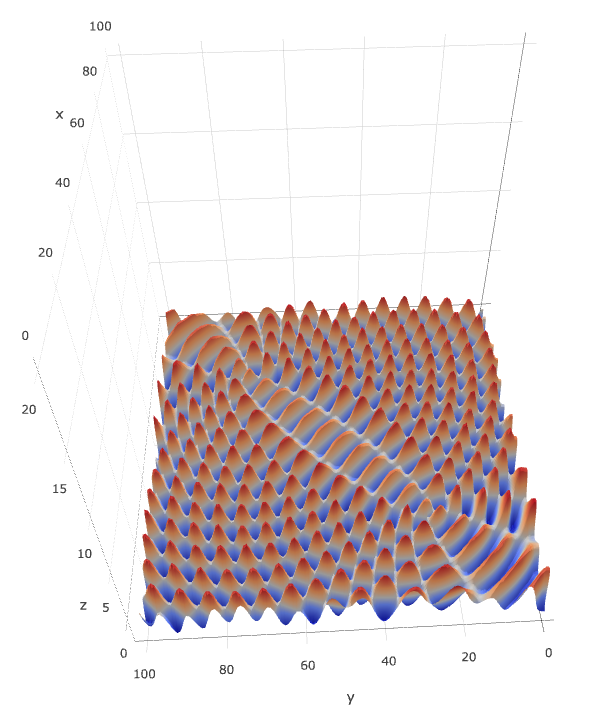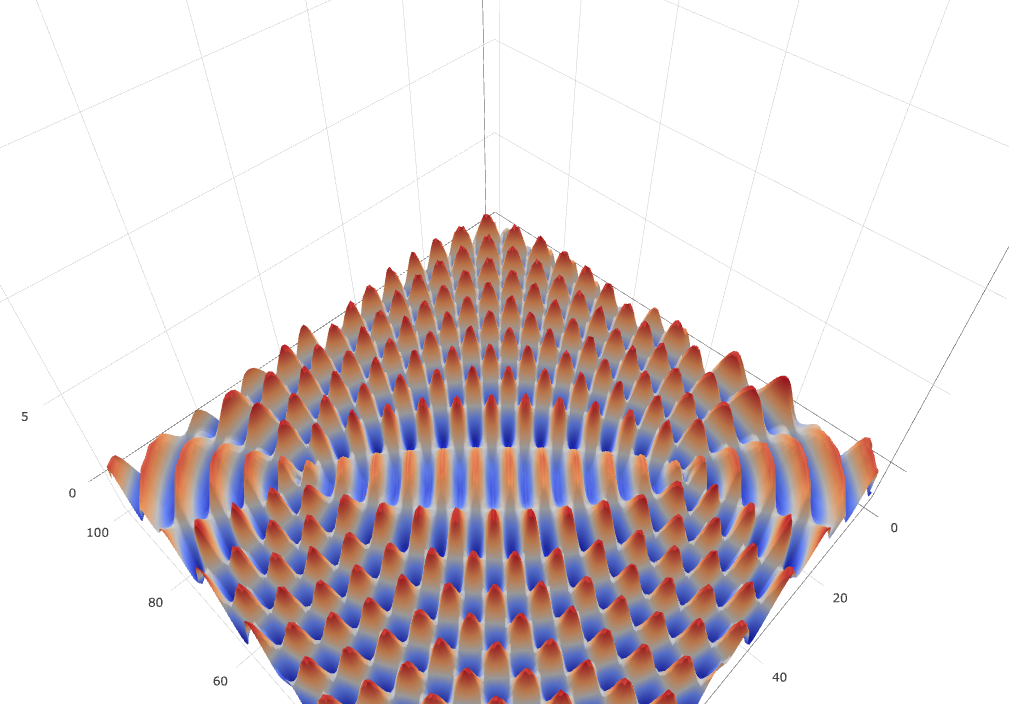利用 python+plotly 製作雙波源干涉現象的3D Surface Plots三維影象
阿新 • • 發佈:2019-01-04
本人在學習完製作雙波源干涉現象的的二維Contour Plots影象之後,發現 plotly 還有3D 影象製作,也就是3D Surface Plots,這個更能展示雙波源干涉現象的結果,果然學之。中間有些地方要說明一下,3D Surface Plots圖表預設的底部是正方形,所以我採用了100*100的干涉圖,然後加上一層透明的圖示,讓影象壓扁,不然圖示的上下限就是波動位置,看起來非常不雅觀。
下面分享程式碼和結果:
下面是 python部分的程式碼:
#!/usr/bin/python # coding=utf-8 import plotly.plotly z = [] with open("/Users/Vicky/Documents/workspace/fission/long/intervene.log") as apidata: for i in apidata: data = i.split("\n")[0].split(",") z.append(data) matrix = [[20 for zij in zi] for zi in z]#為了讓立體圖壓扁 plotly.offline.plot([ dict( z=z, type="surface" ), dict( z=matrix, showscale=False, opacity=0.01,#透明度 type="surface" ) ], filename="2222.html")
下面是 java 部分的程式碼,是為了生成資料:
package practise; import java.awt.Point; import java.util.ArrayList; import java.util.List; import source.SourceCode; public class Intervene extends SourceCode { public List<List<Double>> data = new ArrayList<>(); public static void main(String[] args) { Intervene intervene = new Intervene(); intervene.testDemo001(); } public void testDemo001() { Point point1 = new Point(25, 25); Point point2 = new Point(75, 75); int lamda = 6; for (int i = 0; i < 100; i++) {// y 軸 List<Double> distance = new ArrayList<>(); for (int j = 0; j < 100; j++) {// x 軸 Point point = new Point(j, i); double x = point.distance(point1) % lamda / lamda; double y = point.distance(point2) % lamda / lamda; double xx = Math.sin(x * 2 * Math.PI); double yy = Math.sin(y * 2 * Math.PI); distance.add(xx + yy); } data.add(distance); } StringBuffer content = new StringBuffer(); int size = data.size(); for (int i = 0; i < size; i++) { String text = data.get(i).toString(); text = text.substring(1, text.length() - 1); if (i == 0) content.append(text); content.append(LINE + text); } logLong("intervene.log", content.toString()); } }
下面是3D Surface Plots圖的截圖:
宣傳一下自己的 QQ群:群號:340964272



